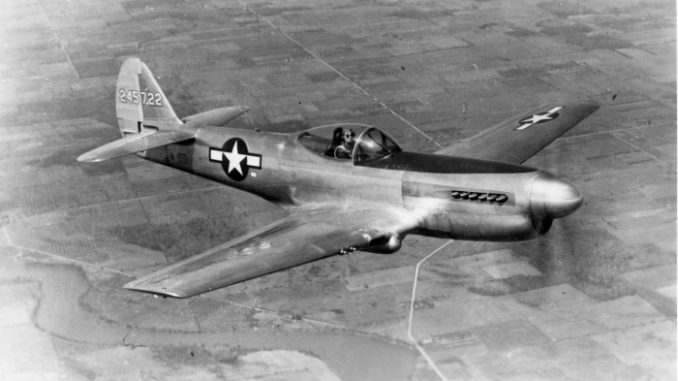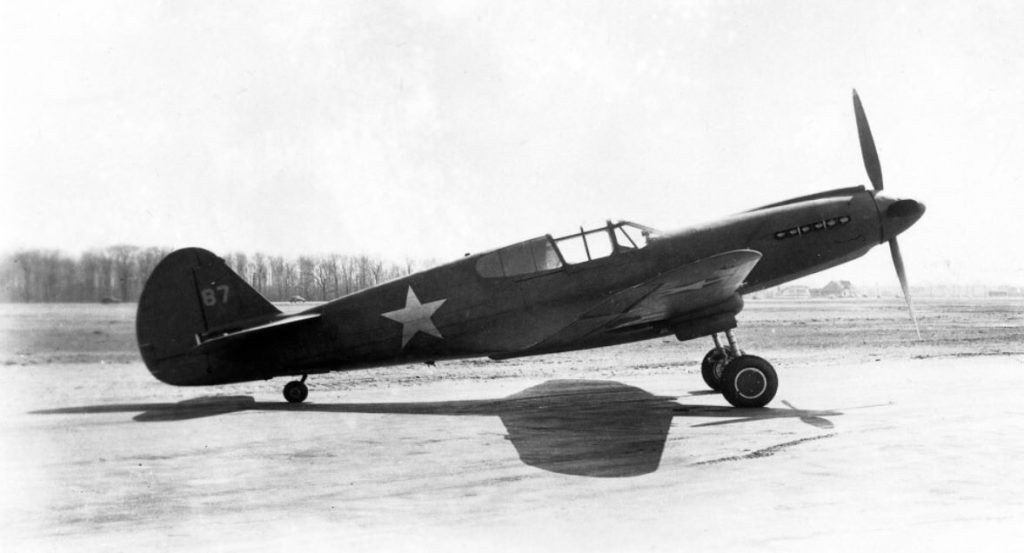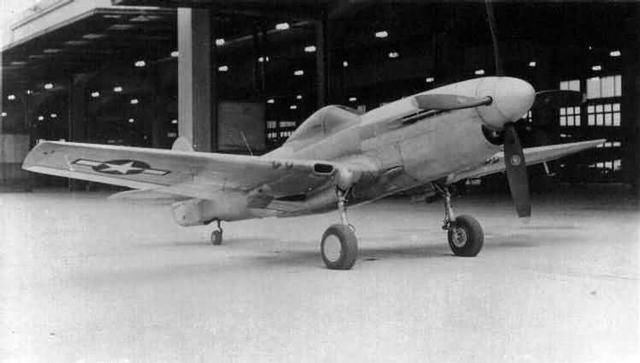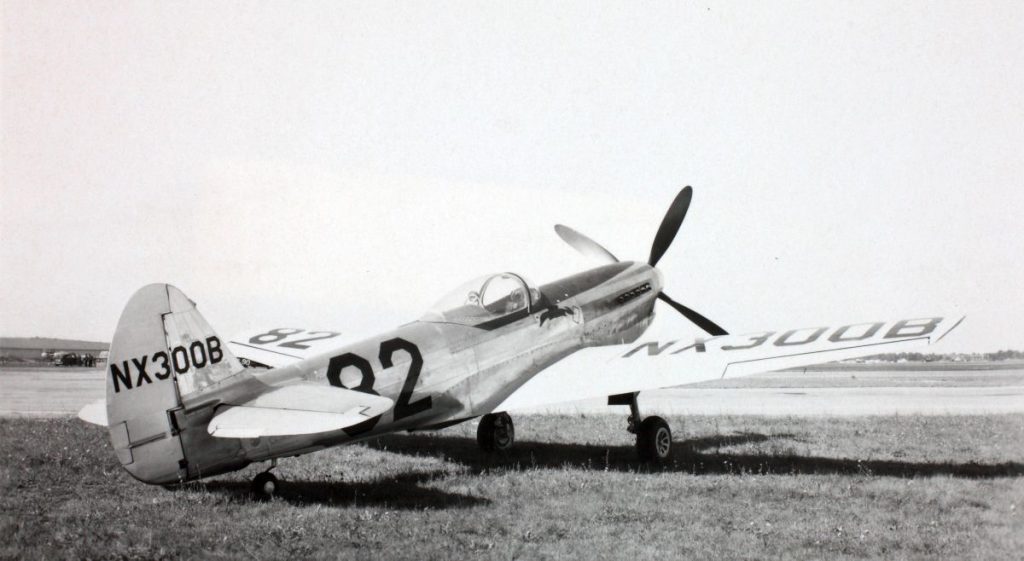
Throughout aviation history, countless aircraft designs have sparked the imagination of engineers, pilots, and aviation enthusiasts. Many of these innovative concepts, however, never made it past the drawing board or prototype stage. “Grounded Dreams: The Story of Canceled Aircraft” delves into the fascinating world of these ambitious projects that, for various reasons, were never fully realized. From groundbreaking technological advancements to strategic missteps, this exploration uncovers the stories behind the aircraft that promised to revolutionize the skies but were ultimately grounded before they could take flight. Join us as we journey through the highs and lows of aviation history, spotlighting the aircraft that could have changed the course of aeronautical progress had their dreams not been deferred. Check our previous entries HERE.
In the midst of World War II, Curtiss sought to remain a leading aircraft manufacturer by developing fighter planes that could compete with advanced designs from other countries. This quest led to the development of several unsuccessful prototypes, with the XP-40Q series emerging as one final glimmer of potential for the company. As the last model of Curtiss’s P-40 series, the XP-40Q aimed to revitalize the aging P-40 with features that could match the performance of newer fighter aircraft being deployed by allied forces.
Origins and Objectives of the XP-40Q Program
The XP-40Q development program began in 1943 with the objective of refining the P-40 airframe to produce a fighter that could equal or surpass the performance of its contemporary rivals. The goal was to create an aircraft that would avoid significant tooling delays by using components similar to existing P-40 models and ensure easier maintenance and operation for crews already familiar with the P-40’s systems. To this end, three XP-40Q prototypes were constructed, although their histories and origins have been debated among aviation historians. These prototypes were not completely new aircraft but rather modified versions of existing P-40 airframes, each equipped with four .50-caliber machine guns with a total of 235 rounds per gun. Each prototype also had a two-stage supercharged Allison V-1710 engine with a four-blade propeller.
Development of the First Prototype: XP-40Q-1


The initial prototype, the XP-40Q-1, was built in 1943 from a damaged P-40K-10 (serial number 42-9987) that had suffered a landing accident. The Q-1 prototype had a longer nose to accommodate the V-1710-101 (F27R) engine, which delivered 1,500 horsepower at 6,000 feet and 1,325 horsepower during takeoff. While the XP-40Q-1 shared many characteristics with the P-40, its air intake was positioned above the cowling, and the radiator and oil cooler were relocated to the wing’s center section below the fuselage. With a wingspan of 37 feet, 4 inches, and a length of 35 feet, 4 inches, the Q-1 took its maiden flight on June 13, 1943. However, in November, it underwent modifications, including the installation of a bubble canopy, and was subsequently designated as the XP-40Q-2.
XP-40Q-2 and Its Capabilities
The XP-40Q-2 became a standout version in the series due to its excellent visibility, maneuverability, and overall handling. Its radiator and oil cooler were moved to the P-40’s traditional chin position, with a streamlined scoop design, while the aircraft retained its olive drab finish. Powered by the same V-1710-101 engine, it demonstrated impressive performance, achieving speeds up to 422 mph at 20,500 feet and a maximum climb rate of 4,410 feet per minute at 5,000 feet. A flight test evaluation in April 1944 praised the Q-2 as superior to all previous P-40 models and capable of climbing to 39,000 feet, with a range of 700 miles. After an accident in March 1944, the Q-2 was repaired and sent to Wright Field, Ohio, where it suffered further damage during landing in July of that year.
The Development of XP-40Q-2A and the Last Prototype XP-40Q-3


The next prototype, designated XP-40Q-2A, was a modification of an early P-40K-1 airframe (serial number 42-45722) converted to the unofficial XP-40N. This version included a bubble canopy similar to that of the Q-2, though it had slight modifications to the cockpit and canopy. The Q-2A was plagued by recurring engine issues, leading to numerous forced landings and downtime for repairs. As a result, the Army Air Force (AAF) shifted its focus to the XP-40Q-3.
The XP-40Q-3 was the last in the series, built from a P-40N-25 airframe (serial number 43-24571). The aircraft’s windscreen and canopy were modified for better visibility, and it featured the -121 engine. Delivered to the AAF in April 1944, the XP-40Q-3 suffered an engine failure early on and was subsequently abandoned, as other more capable aircraft were available.
The XP-40Q Series and Its Ultimate Fate

By 1946, the XP-40Q-2A prototype had been declared surplus and eventually acquired by Joe Ziegler. Registered as NX300B, it was entered in the 1947 Thompson Trophy Race but did not qualify. During the race, the Q-2A’s engine caught fire, forcing Ziegler to bail out of the aircraft, which led to its destruction.
The XP-40Q’s story highlights the tragic legacy of Curtiss’s efforts during the war years. Though it represented one of Curtiss’s finest fighter developments, the XP-40Q came two years too late. Its performance was comparable to other fighter aircraft already in production, and even if it had been ready earlier, the Allison engines necessary to unlock its full potential were still under development. The XP-40Q series stands as a reminder of Curtiss’s struggle to create a successful aircraft during a period when each new model seemed to be outpaced by its contemporaries.
Conclusion: The Legacy of Curtiss XP-40Q Series
The XP-40Q represented Curtiss’ commitment to innovation in fighter design, even though its timeline ultimately fell short of influencing wartime production. The aircraft’s design improvements, such as the streamlined canopy, repositioned engine intakes, and advancements in maneuverability, set it apart as a sophisticated aircraft. However, by the time the XP-40Q series was ready for potential production, superior aircraft had already taken center stage.
Throughout aviation history, countless aircraft designs have sparked the imagination of engineers, pilots, and aviation enthusiasts. Many of these innovative concepts, however, never made it past the drawing board or prototype stage. “Grounded Dreams: The Story of Canceled Aircraft” delves into the fascinating world of these ambitious projects that, for various reasons, were never fully realized. From groundbreaking technological advancements to strategic missteps, this exploration uncovers the stories behind the aircraft that promised to revolutionize the skies but were ultimately grounded before they could take flight. Join us as we journey through the highs and lows of aviation history, spotlighting the aircraft that could have changed the course of aeronautical progress had their dreams not been deferred. Check our previous entries HERE.
"Haritima Maurya, pen name, ""Another Stardust,"" has been passionate about writing since her school days and later began sharing her work online in 2019. She was drawn to writing because of her love for reading, being starstruck by the art of expression and how someone can make you see and feel things exclusive to their experience. She wanted to be able to do that herself and share her mind with world cause she believes while we co exist in this beautiful world least we can do is share our little worlds within.
As a commercial pilot, Haritima balances her passion for aviation with her love for storytelling. She believes that, much like flying, writing offers a perspective beyond the ordinary, offering a bridge between individual experiences and collective understanding.
Through her work, ""Another Stardust"" aims to capture the nuances of life, giving voice to moments that resonate universally. "




Be the first to comment
Graphic Design, Branding and Aviation Art